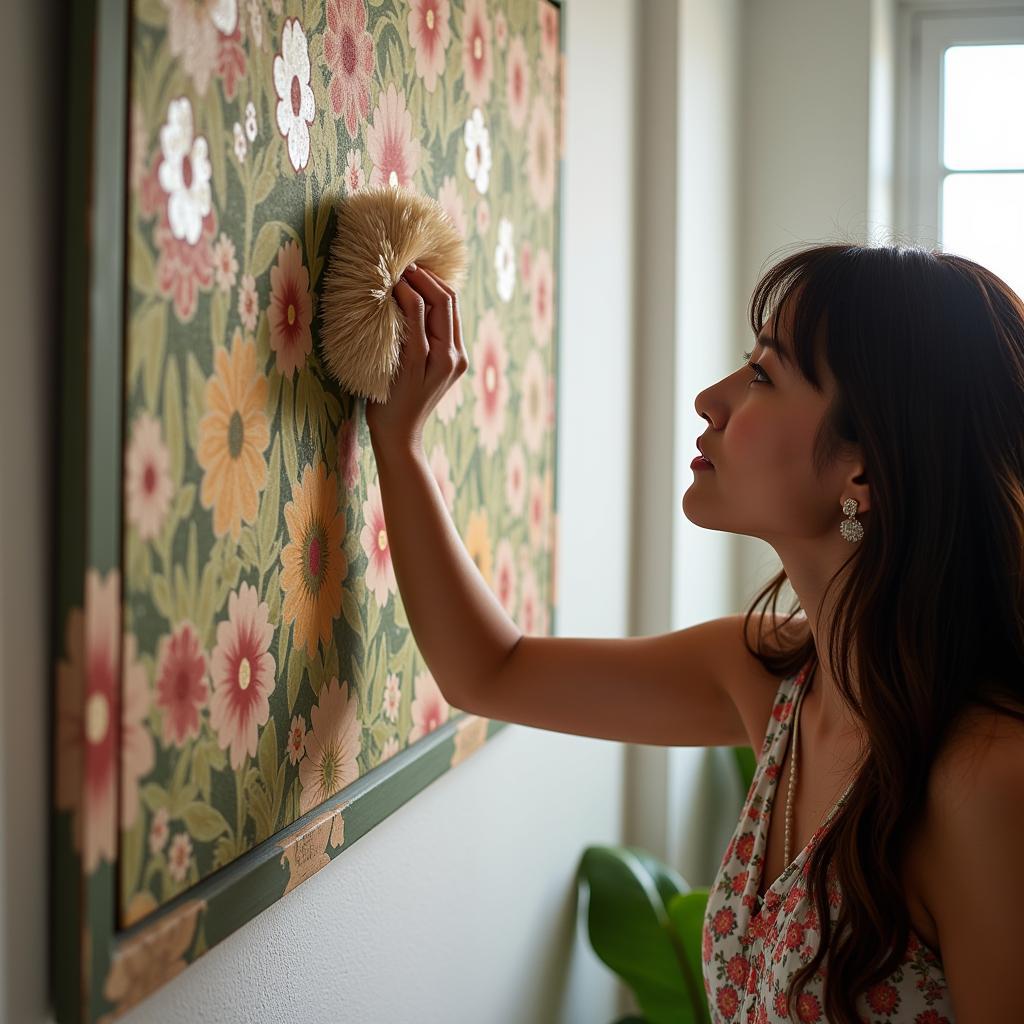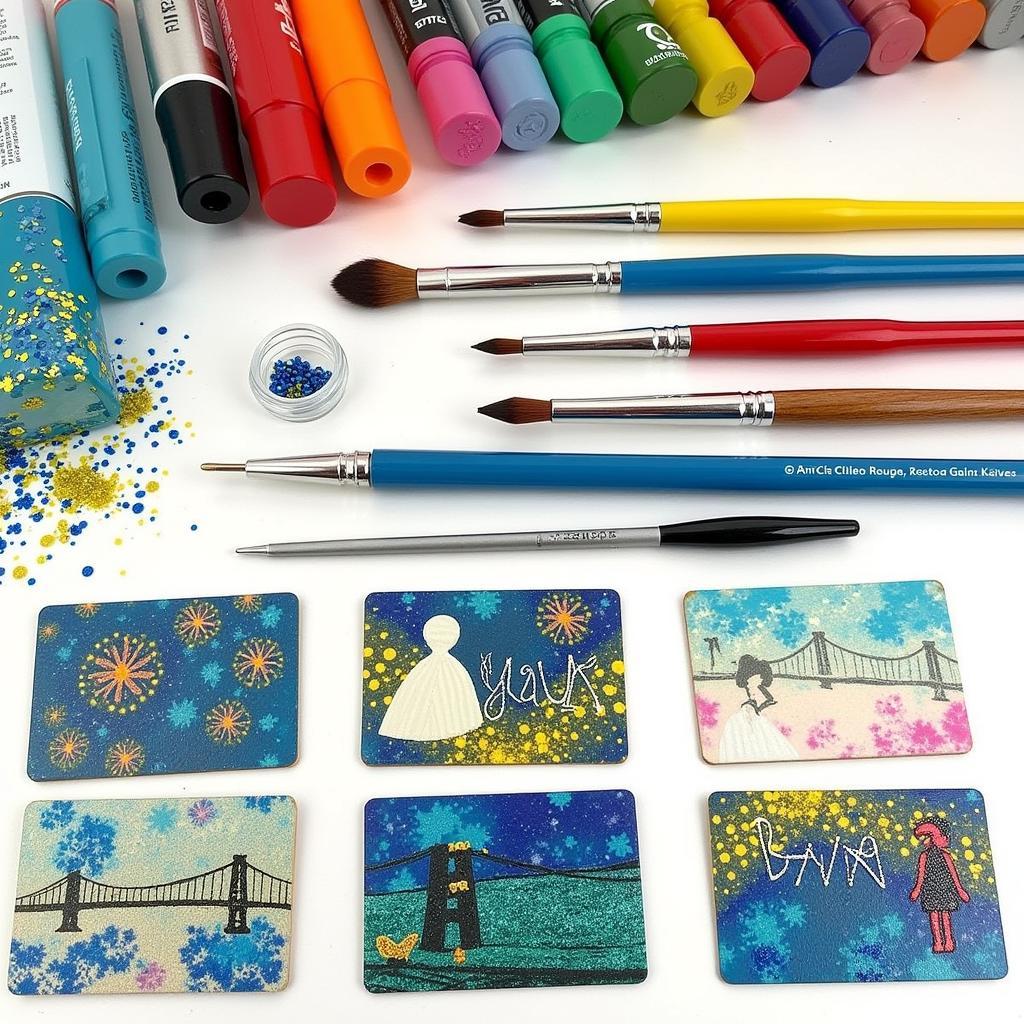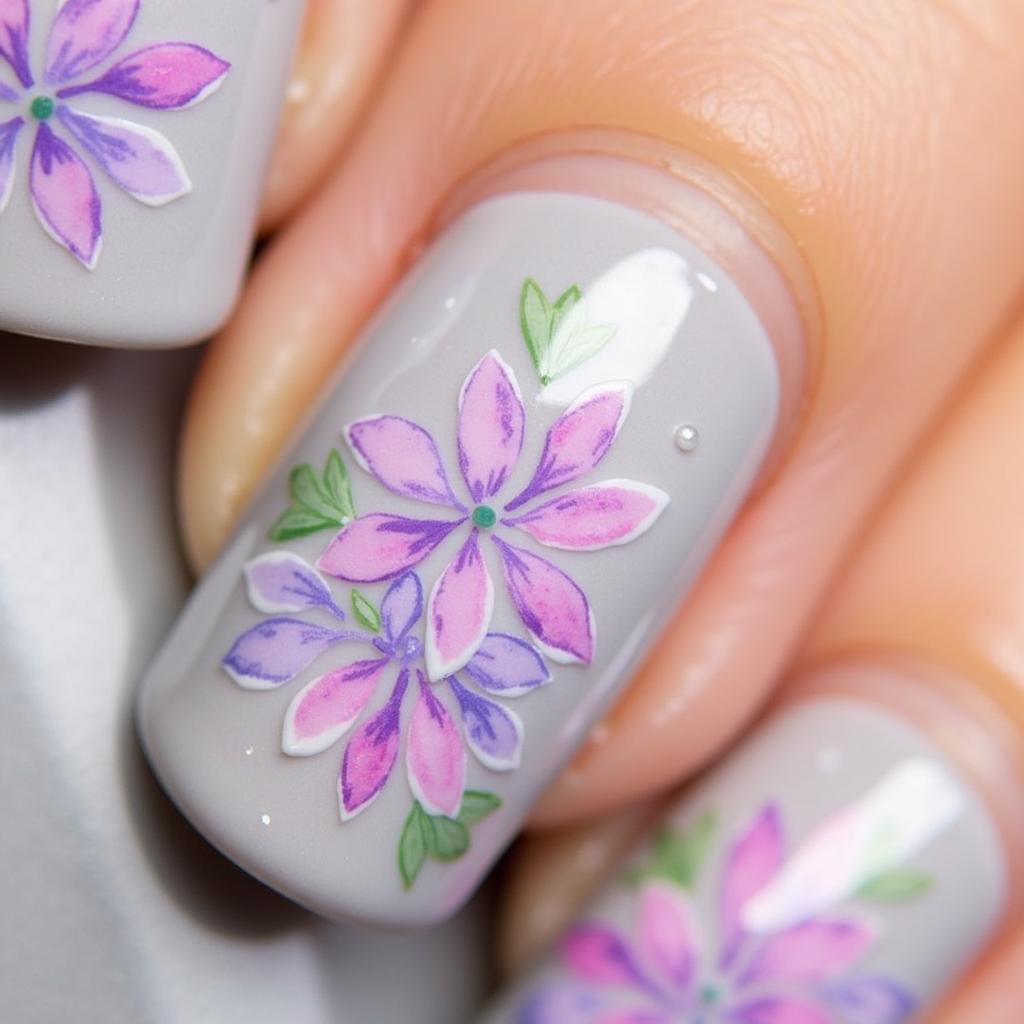Martial Arts Headbands: A Symbol of Tradition and Focus
Martial Arts Headbands, also known as hachimaki, are more than just a stylish accessory. They represent tradition, dedication, and focus in various martial arts disciplines. Let’s explore the rich history, significance, and practical applications of these symbolic head coverings.
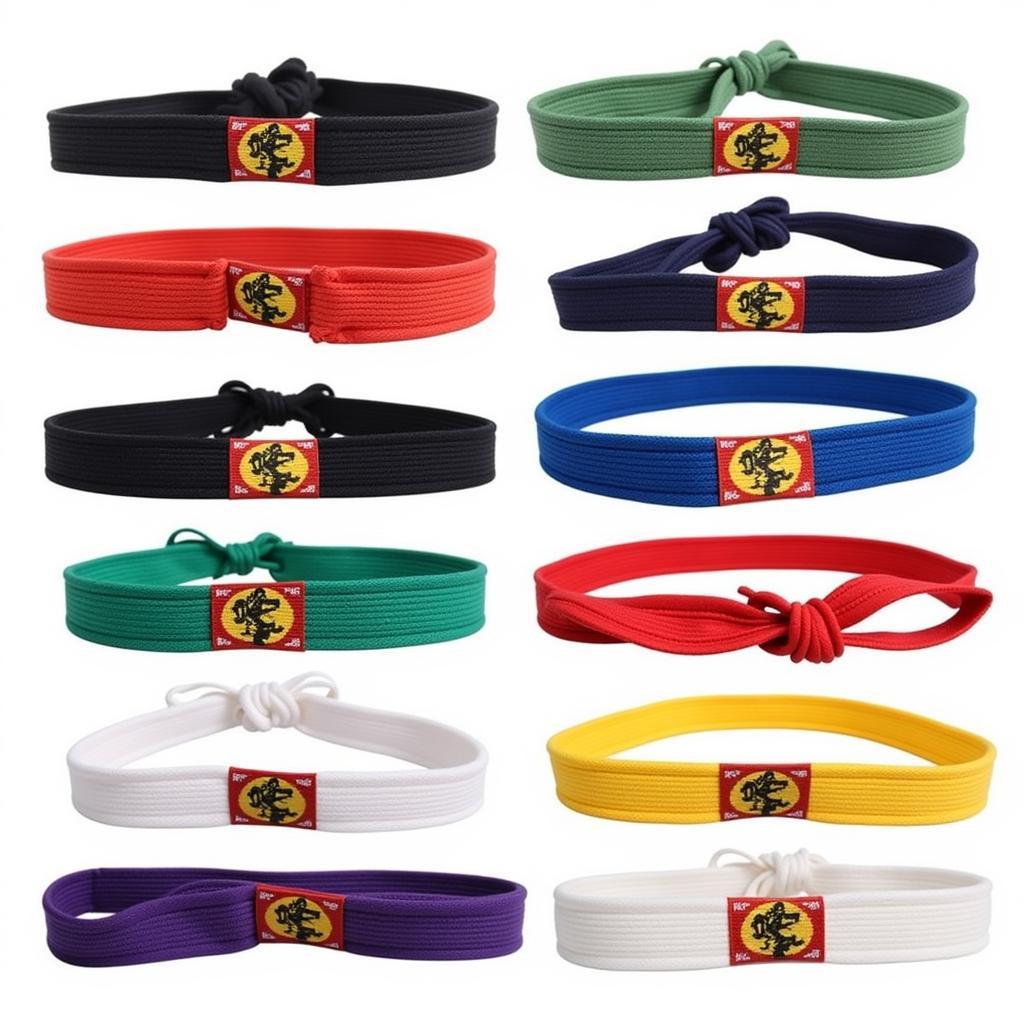 Different Styles of Martial Arts Headbands
Different Styles of Martial Arts Headbands
Martial arts headbands have deep roots in Japanese culture, initially worn by samurai to keep sweat out of their eyes and hair during combat. This practical use evolved into a powerful symbol of perseverance, courage, and a warrior’s spirit. Today, martial arts headbands continue to serve a practical purpose, absorbing sweat and keeping hair in place, but their symbolic meaning remains equally significant. They signify a practitioner’s commitment to their training and the pursuit of excellence.
The Significance of Martial Arts Headbands
Why do martial artists wear headbands?
Martial artists wear headbands for several reasons, both practical and symbolic. They absorb sweat, preventing it from hindering vision during intense training. They keep hair out of the face, allowing for better focus. And most importantly, they symbolize the spirit of the martial artist, their unwavering dedication and focus.
Beyond functionality, the headband acts as a visual reminder of the martial artist’s goals and the principles they strive to uphold. This constant visual cue helps reinforce discipline, mental fortitude, and commitment to the art.
Different Types and Styles
Martial arts headbands come in various colors, materials, and styles. Common materials include cotton, silk, and synthetic blends. While the most common color is white, other colors like red, black, and blue are also prevalent, often symbolizing different ranks or schools. Some headbands feature embroidered characters, adding another layer of symbolism and personalization. Martial arts attire often incorporates these symbolic elements, creating a cohesive and meaningful representation of the art.
How to tie a martial arts headband?
Tying a martial arts headband is relatively simple. The most common method involves folding the headband lengthwise, wrapping it around the forehead, and tying a knot at the back. The knot should be firm but not too tight, ensuring comfort during training.
Martial Arts Headbands in Modern Culture
Martial arts headbands have transcended their traditional role and become a recognizable symbol in popular culture. They appear in movies, video games, and anime, further perpetuating their association with strength, discipline, and focus. This widespread representation has introduced martial arts headbands to a broader audience, sparking interest and appreciation for their cultural significance.
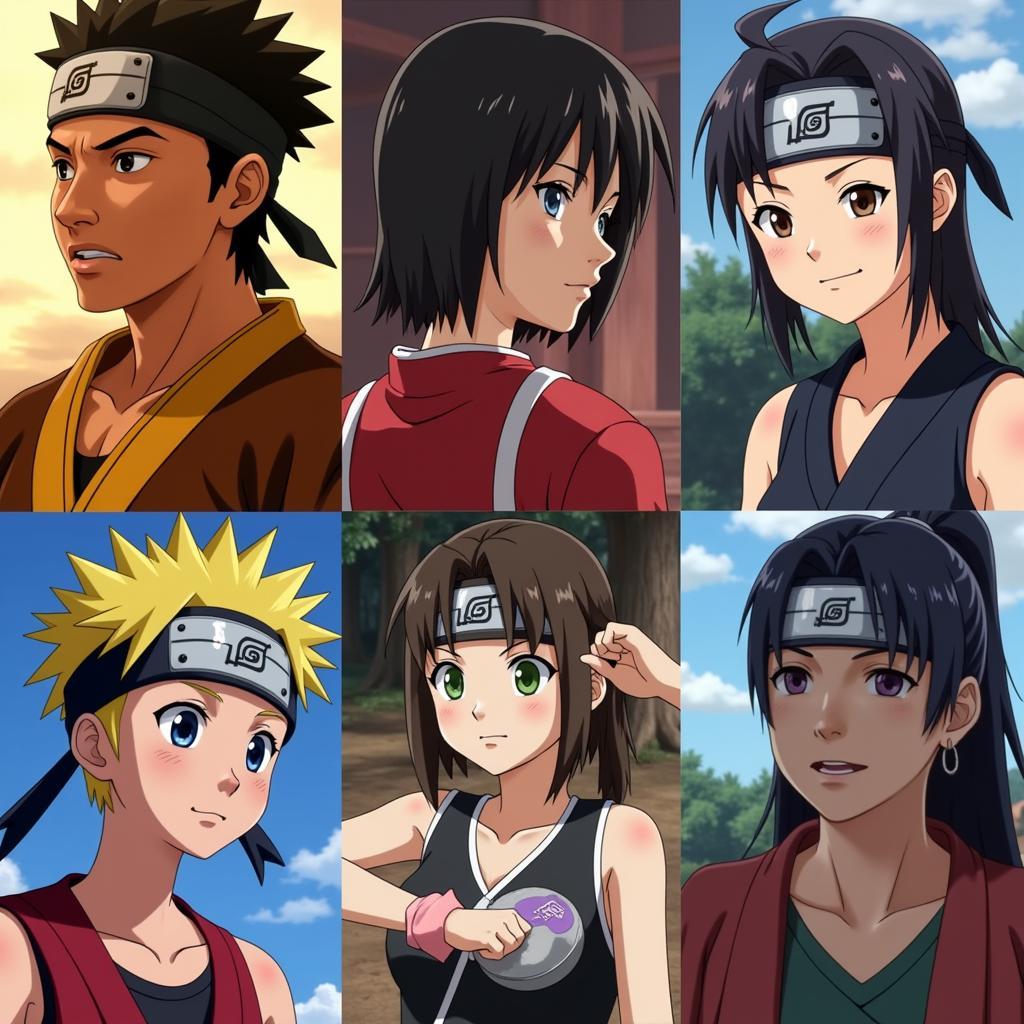 Martial Arts Headbands in Popular Culture
Martial Arts Headbands in Popular Culture
“A headband is not just about practicality; it’s a symbol of respect for tradition and a commitment to the art,” says Master Kenji Tanaka, a renowned 7th Dan black belt in Karate with over 40 years of experience.
“Wearing a headband helps me connect with the spirit of the samurai warriors and reminds me of the discipline required to master martial arts,” adds Sensei Akiko Sato, a respected Aikido instructor with a wealth of knowledge in Japanese martial arts history.
In conclusion, martial arts headbands serve as a powerful symbol of tradition, focus, and dedication. They represent the spirit of the martial artist and their unwavering commitment to the art. Whether worn for practical purposes or symbolic significance, the martial arts headband holds a unique place in the world of martial arts.
FAQs about Martial Arts Headbands
-
What is the purpose of a martial arts headband?
Answer: Martial arts headbands absorb sweat, keep hair in place, and symbolize dedication and focus. -
What are martial arts headbands made of?
Answer: Common materials include cotton, silk, and synthetic blends. -
What do different headband colors signify?
Answer: While white is the most common, other colors can signify different ranks or schools. -
How do you tie a martial arts headband?
Answer: Fold it lengthwise, wrap it around the forehead, and tie a knot at the back. -
Where can I buy a martial arts headband?
Answer: Martial arts supply stores and online retailers. -
Are there different types of martial arts headbands?
Answer: Yes, they vary in material, color, and style. -
Can anyone wear a martial arts headband?
Answer: While traditionally worn by martial artists, anyone can wear one as a symbol of respect for the art.
“The headband is a tangible reminder of the mental strength and discipline we cultivate in martial arts,” explains Master Hideo Yamamoto, a Judo expert with over 50 years of experience in teaching and training.
For any inquiries regarding martial arts equipment or training, please contact us at Phone Number: 02462573573, Email: danteum@gmail.com or visit us at Savico Megamall, 7-9 Đ. Nguyễn Văn Linh, Gia Thụy, Long Biên, Hà Nội 10000, Việt Nam. We have a 24/7 customer support team.

